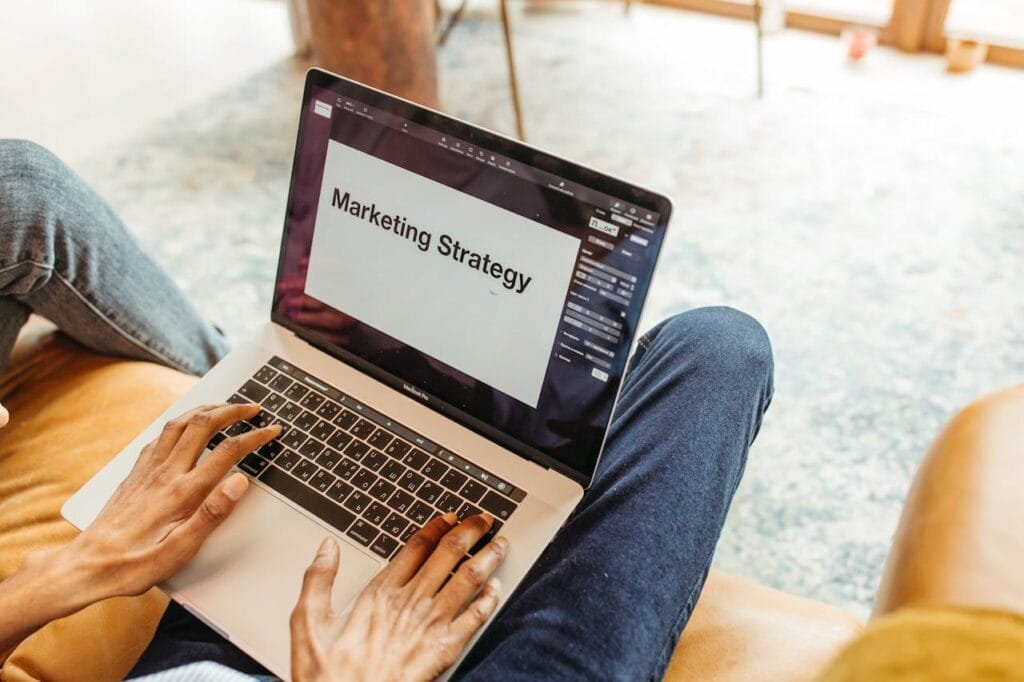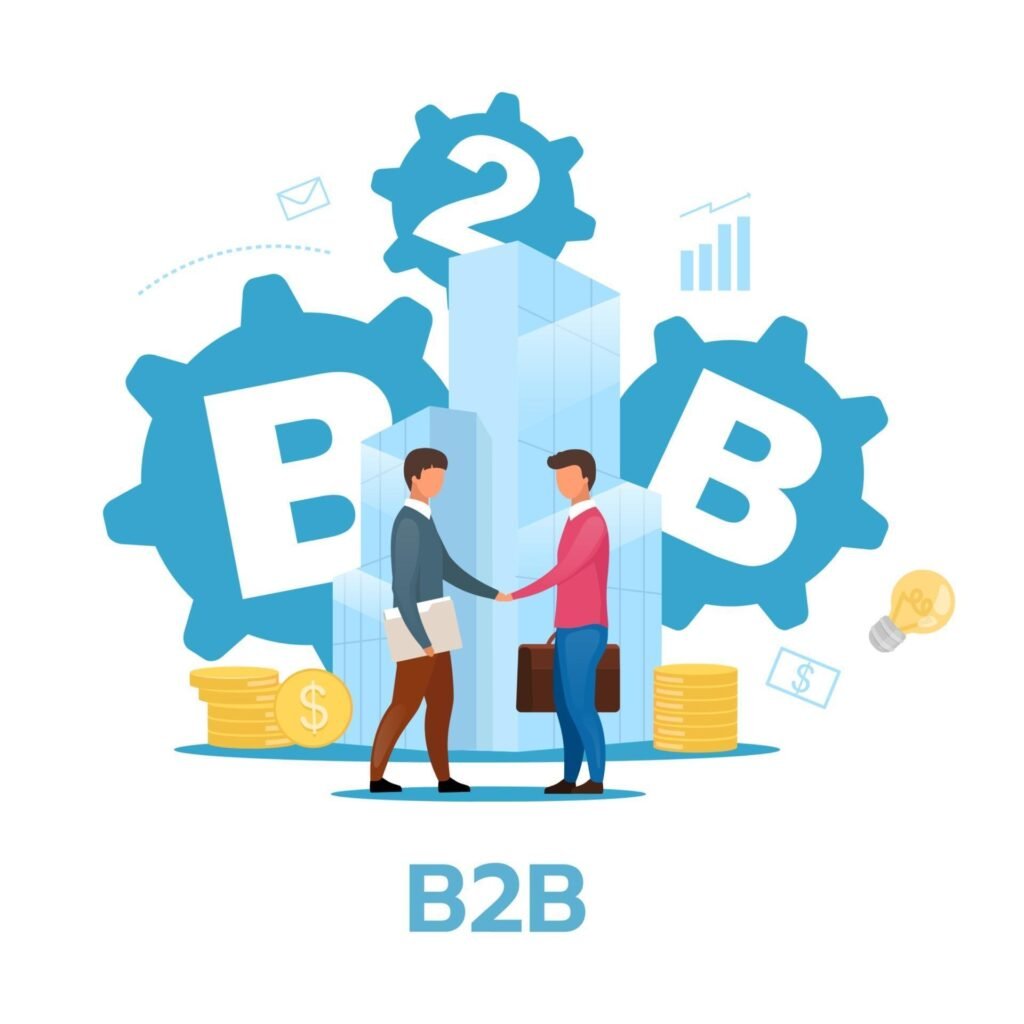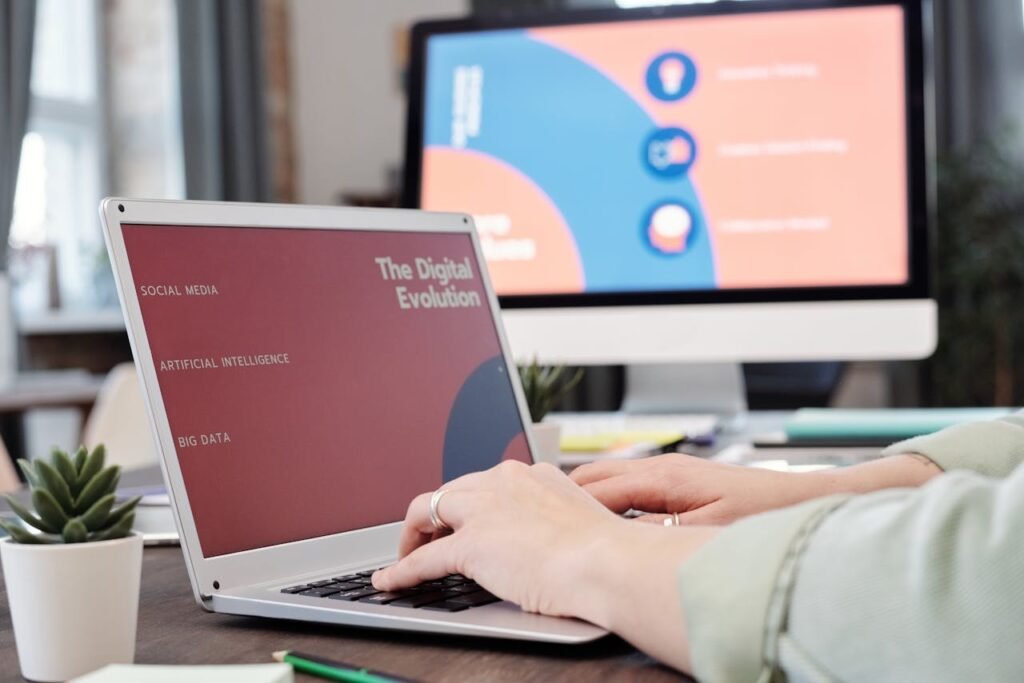As a CEO, you know that not all traffic is created equal. It’s not enough to simply drive visitors to your site—what matters most is the quality of those visitors and whether they’re ready to take action. This is where targeting user intent comes in. User intent is the key to attracting visitors who aren’t just browsing but are genuinely interested in your products or services and likely to convert into leads.
In this guide, we’ll cover how CEOs can better target user intent with SEO strategies that bring in qualified leads. From understanding different types of intent to using intent-driven content and optimizing your site’s structure, these tactics will help you capture the right traffic, drive conversions, and ultimately grow your business.
Why User Intent Matters for Qualified Leads
The Role of User Intent in SEO
User intent, or search intent, refers to the purpose behind a search query. It’s the reason why someone goes to Google and types in a phrase. Are they looking to learn something? Compare products? Make a purchase? Knowing the intent behind search terms helps you align your content with what users actually want, increasing the likelihood they’ll find value in your site and engage further.
For example, if someone searches for “best CRM software for small businesses,” they’re likely comparing options and have high intent to eventually make a purchase. Creating content that directly addresses this intent is far more likely to convert them into a lead than general information about CRM benefits.
Why Targeting Intent Brings in Higher-Quality Leads
When your SEO strategy aligns with user intent, you naturally attract visitors who are closer to making a decision. Instead of bringing in random clicks, you’re capturing people who are looking for solutions, making them more qualified. These users are more likely to engage, stay on your site longer, and take action—whether it’s filling out a form, signing up for a demo, or reaching out for more information.
Step 1: Understand the Different Types of User Intent

The Four Main Types of User Intent
- Informational Intent: Users are looking to learn something. They may type in questions like “how to use a CRM” or “what is SEO.” These users are in the early stages of research.
- Navigational Intent: Users want to go to a specific website or page, like “LinkedIn login” or “HubSpot blog.” They already know where they want to go and are simply navigating.
- Commercial Investigation: Users are in the consideration phase, researching products or services with the intent to compare options. Searches like “top CRMs for small business” indicate they are weighing choices but haven’t made a decision yet.
- Transactional Intent: Users are ready to buy, sign up, or take direct action. They search terms like “buy CRM software” or “get a CRM free trial,” showing that they’re prepared to commit.
Why CEOs Should Focus on Commercial and Transactional Intent
For CEOs aiming to drive qualified leads, the focus should be on users with commercial and transactional intent. These are visitors who have done their research and are closer to making a decision. By creating content tailored to these intents, you increase the likelihood of capturing users who are ready to take action, making them high-value leads for your business.
Step 2: Conduct Intent-Driven Keyword Research
Using Keyword Tools to Identify Intent
To target user intent effectively, start by identifying keywords that align with high-intent queries. Use SEO tools like Ahrefs, SEMrush, or Google Keyword Planner to find keywords with terms like “best,” “top,” “buy,” “pricing,” or “review.” These terms typically indicate commercial or transactional intent, showing that the user is serious about finding a solution.
For instance, if you’re a CRM provider, keywords such as “best CRM for small business,” “CRM software pricing,” or “buy CRM software online” can lead to traffic that’s ready to convert. Prioritize these keywords in your content strategy for high-quality lead generation.
Analyze Competitor Keywords for Intent Insights
Look at the keywords your competitors are ranking for, especially those that appear on their sales or landing pages. Competitors’ content can provide insight into the keywords that drive qualified traffic in your industry. Tools like SEMrush’s Keyword Gap or Ahrefs’ Content Gap allow you to see which high-intent keywords your competitors are targeting and use this data to refine your own strategy.
Step 3: Create Content that Matches User Intent
Develop Content for Different Intent Stages
To drive qualified leads, create content that caters to each stage of the buyer’s journey, particularly the consideration and decision stages where commercial and transactional intent are strongest. Here’s how:
- Consideration Stage: Create in-depth guides, comparisons, and case studies that provide detailed information. This could be a blog post on “Comparing the Top CRM Software for Small Businesses” or a case study highlighting how a particular client improved their sales process with your CRM solution.
- Decision Stage: This content should be highly actionable, such as product demos, trial signups, or pricing pages. For example, create a landing page specifically for “CRM Software Pricing” that provides clear options and an easy way to get started.
By mapping your content to intent, you not only attract visitors but guide them down the path to conversion.
Use Long-Form Content to Satisfy Information-Intensive Queries
High-intent users often seek comprehensive answers, so creating long-form content that thoroughly addresses their questions can be very effective. Long-form content allows you to dive deep, cover multiple angles, and address potential objections, which builds trust and authority.
For instance, if you’re targeting the keyword “how to choose a CRM for small business,” a detailed, well-organized guide can answer all their questions and position your brand as a trusted advisor. By demonstrating value in your content, you make it easier for qualified leads to consider your product.
Step 4: Optimize On-Page Elements for Conversion

Craft Actionable Meta Titles and Descriptions
Meta titles and descriptions are often the first impression your content makes on potential leads, so make them count. Use clear, benefit-driven language that speaks to user intent. For example, a title like “Top CRM Solutions for Small Businesses—Compare Features & Pricing” tells users they’ll get the information they need to make a choice.
Descriptions should also reflect the specific benefit of clicking on your page. If someone is searching for “CRM software pricing,” a description like “See transparent pricing for top CRM software—find the best solution for your business today” directly addresses their intent and encourages clicks.
Structure Pages for Easy Navigation
High-intent users should be able to find information quickly and easily on your pages. Use clear headers, bullet points, and visuals to break up content and guide users through the page. For example, on a pricing page, make sure each pricing tier is visually distinct with a clear CTA underneath each option.
A user-friendly structure keeps visitors engaged and helps them find what they need without friction, increasing the likelihood of conversion.
Step 5: Incorporate Trust-Building Elements
Add Social Proof with Testimonials and Case Studies
High-intent visitors want to know that your solution works. Including customer testimonials, case studies, and reviews on relevant pages reinforces trust and credibility. If a user sees that other businesses similar to theirs have had success with your product, they’re more likely to see your solution as reliable and effective.
For instance, placing a case study on a page targeting “best CRM for sales teams” can demonstrate the success of past clients, adding proof of your product’s effectiveness for high-intent leads.
Use Trust Badges and Certifications
Trust badges, such as SSL security icons or certification seals, can help reassure users that their information is secure. For businesses with privacy-sensitive industries, displaying certifications like “HIPAA Compliant” or “GDPR Compliant” shows a commitment to data protection, which can be a deciding factor for high-intent users concerned about security.

Related: Check out our free tools:

Step 6: Implement Retargeting for Unconverted High-Intent Visitors
Set Up Retargeting Campaigns for High-Intent Visitors
Not every high-intent visitor will convert on their first visit, so use retargeting ads to stay on their radar. Retargeting allows you to show ads to users who visited specific pages, such as product comparisons or pricing, and encourage them to return.
For example, if a visitor checked out your “CRM Software Pricing” page but left, a retargeting ad that offers a free demo or trial can prompt them to return and complete their journey. Retargeting keeps your brand top-of-mind, capturing the attention of qualified leads who may just need an extra nudge.
Personalize Retargeting Messages Based on Intent
Personalize your retargeting ads to reflect the specific pages or content a user engaged with. If they visited a comparison page, an ad that highlights “Why Our CRM Is Right for You” may be more effective than a general promotion. Personalized retargeting strengthens your connection with users by addressing their unique interests and needs.
Step 7: Continuously Monitor and Refine SEO Strategy for User Intent

Track Key Metrics Like Conversion Rate and Time on Page
To ensure your SEO efforts are effectively targeting user intent, regularly monitor metrics such as conversion rate, time on page, and bounce rate. These indicators show how well your content aligns with user needs. A high bounce rate or short time on page may suggest that the content isn’t meeting expectations, prompting adjustments to better match intent.
Use A/B Testing to Optimize Content
Experiment with different content elements—headlines, CTAs, layouts, and more—to find what resonates best with high-intent visitors. A/B testing helps identify small changes that can have a big impact on conversions, ensuring that your pages are always optimized for maximum lead generation.
For example, test two different CTAs on a decision-focused page—such as “Request a Demo” vs. “Start Your Free Trial”—to see which drives more conversions. Refining these elements based on performance data ensures that you’re continually improving your strategy for capturing qualified leads.
Step 8: Leverage Content Funnels to Guide High-Intent Users
Create Intent-Based Content Funnels
To effectively guide high-intent users toward conversion, create content funnels that align with each stage of their decision-making journey. A content funnel is a series of strategically connected pieces that move users from awareness to consideration, and finally, to decision-making. This approach lets you address different intents and keeps potential leads engaged as they explore your offerings.
For instance, start with an awareness-stage blog post on “How CRM Improves Sales for Small Businesses.” Link this post to a consideration piece, such as a comparison article titled “Top CRM Features for Small Businesses.” Finally, lead users to a decision-oriented landing page with a CTA for a demo or free trial. By creating a cohesive journey, you ensure users find exactly what they need at each stage, reducing friction and boosting conversions.
Use Internal Linking to Keep Users in the Funnel
Internal linking is a simple yet powerful way to keep high-intent users moving through your content funnel. When readers are engaged with a particular piece of content, strategically placed internal links encourage them to continue exploring related topics, staying on your site longer, and moving closer to a lead action.
For example, within a blog post on “CRM Benefits for Startups,” add a link that says, “Looking for a CRM solution that fits your startup’s budget? Check out our pricing guide.” Internal links help guide users down the funnel, taking them from one relevant piece of content to the next and keeping them on track toward conversion.
Step 9: Optimize for Mobile to Capture On-the-Go Leads

Ensure a Seamless Mobile Experience for High-Intent Visitors
With mobile traffic continuing to grow, ensuring your site is mobile-friendly is essential. High-intent visitors who are researching on their phones need a seamless experience; otherwise, they may abandon your site before taking action. Make sure your mobile layout is intuitive, with readable text, easy-to-tap CTAs, and images that load quickly without sacrificing quality.
Responsive design isn’t just a nice-to-have; it’s crucial for high-intent users who want information quickly. For instance, if a mobile user is exploring your “CRM Pricing” page, they should be able to scroll through options, view details, and click on CTAs without any usability issues. A smooth mobile experience allows you to capture more leads from users who are browsing on their phones.
Shorten Forms and Simplify Checkout for Mobile Users
Mobile users are often in a hurry, so make it easy for them to take action. If you’re capturing leads through a form, keep it short—just ask for essential information like name, email, and perhaps one other field. Avoid asking for too many details initially; you can always request more information later in the lead nurturing process.
For e-commerce sites, streamline the checkout process for mobile users by offering quick payment options like Apple Pay, Google Pay, or one-click checkout. These small optimizations can significantly improve the likelihood of conversions from high-intent mobile users, who value speed and ease of use.
Step 10: Implement Advanced Analytics to Track Intent-Based Conversions
Use Google Analytics to Track User Flow and Conversion Paths
To understand how high-intent users are interacting with your content and moving through the funnel, set up user flow tracking and conversion paths in Google Analytics. User flow data reveals which pages users visit, how long they stay, and where they drop off. This data helps you pinpoint areas where high-intent users might be losing interest or encountering friction, allowing you to make targeted improvements.
For example, if you notice users are frequently dropping off on your “Pricing” page, consider whether the information is clear, if pricing details are too complex, or if a stronger CTA could help. Conversion path analysis gives you insight into what’s working and what isn’t, so you can keep optimizing for better results.
Track Micro-Conversions as Indicators of Engagement
Not every high-intent action results in an immediate lead, but micro-conversions—such as clicking a CTA, signing up for a newsletter, or downloading a guide—indicate interest and engagement. Tracking these smaller actions provides insights into user intent and helps you understand which content elements are resonating.
For instance, if many users download a whitepaper on CRM benefits, this could indicate a strong interest in the topic, making them potential leads for further nurturing. Use micro-conversion data to refine your content strategy, focusing on the pieces that capture high-intent actions and nurture users towards full conversions.
Final Thoughts: Building a High-Intent SEO Strategy for Qualified Leads
Driving high-quality, qualified leads from SEO isn’t about casting the widest net; it’s about focusing on the right audience and aligning your strategy with their intent. By understanding the different types of user intent, conducting intent-driven keyword research, crafting content that meets specific needs, and optimizing for conversion, CEOs can turn their SEO traffic into a steady stream of valuable leads.
The path from traffic to lead requires a targeted, thoughtful approach that goes beyond traditional SEO tactics. With a data-driven focus on user intent, you can capture visitors who are ready to engage, convert them into leads, and set the foundation for long-term business growth. Intent-based SEO is a powerful way to maximize the impact of your marketing efforts, ensuring that every click brings you closer to your business goals.
READ NEXT:
- Are Vanity Metrics Killing Your Marketing Efficiency? Here’s What to Track Instead
- Pinpointing Digital Marketing ROI: Why Your Metrics Aren’t Telling the Full Story
- Unlocking Real ROI in Digital Marketing: The Hidden Costs Draining Your Budget
- How Misaligned Marketing Funnels Are Blocking Your ROI Potential
- Best Digital Marketing Agency In Santa Ana, California
- Best Digital Marketing Agency In San Francisco, California





















